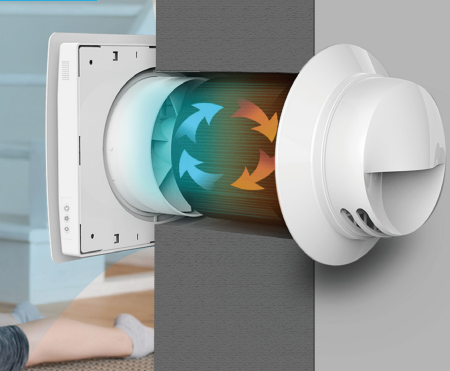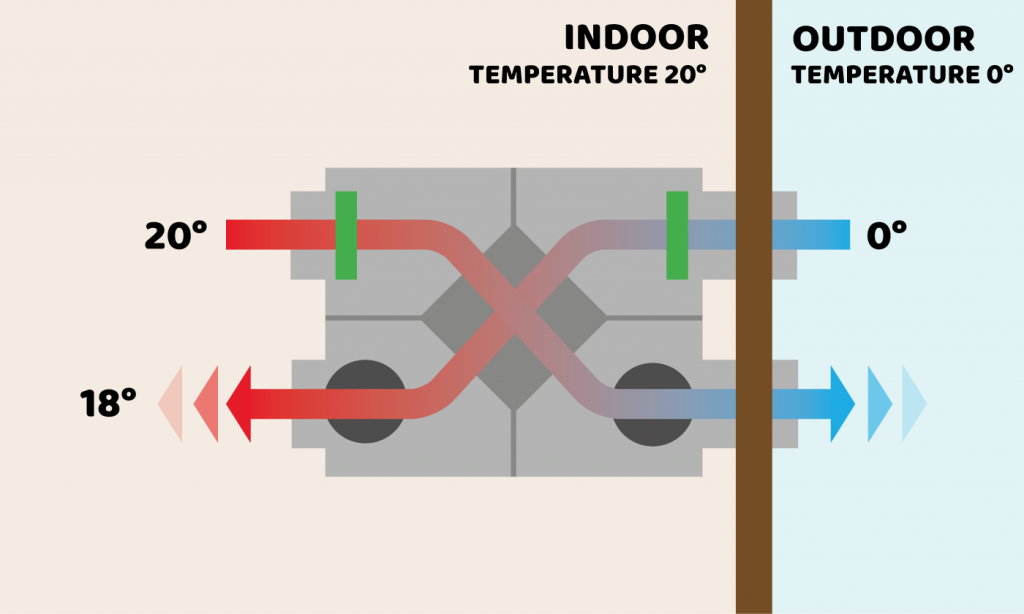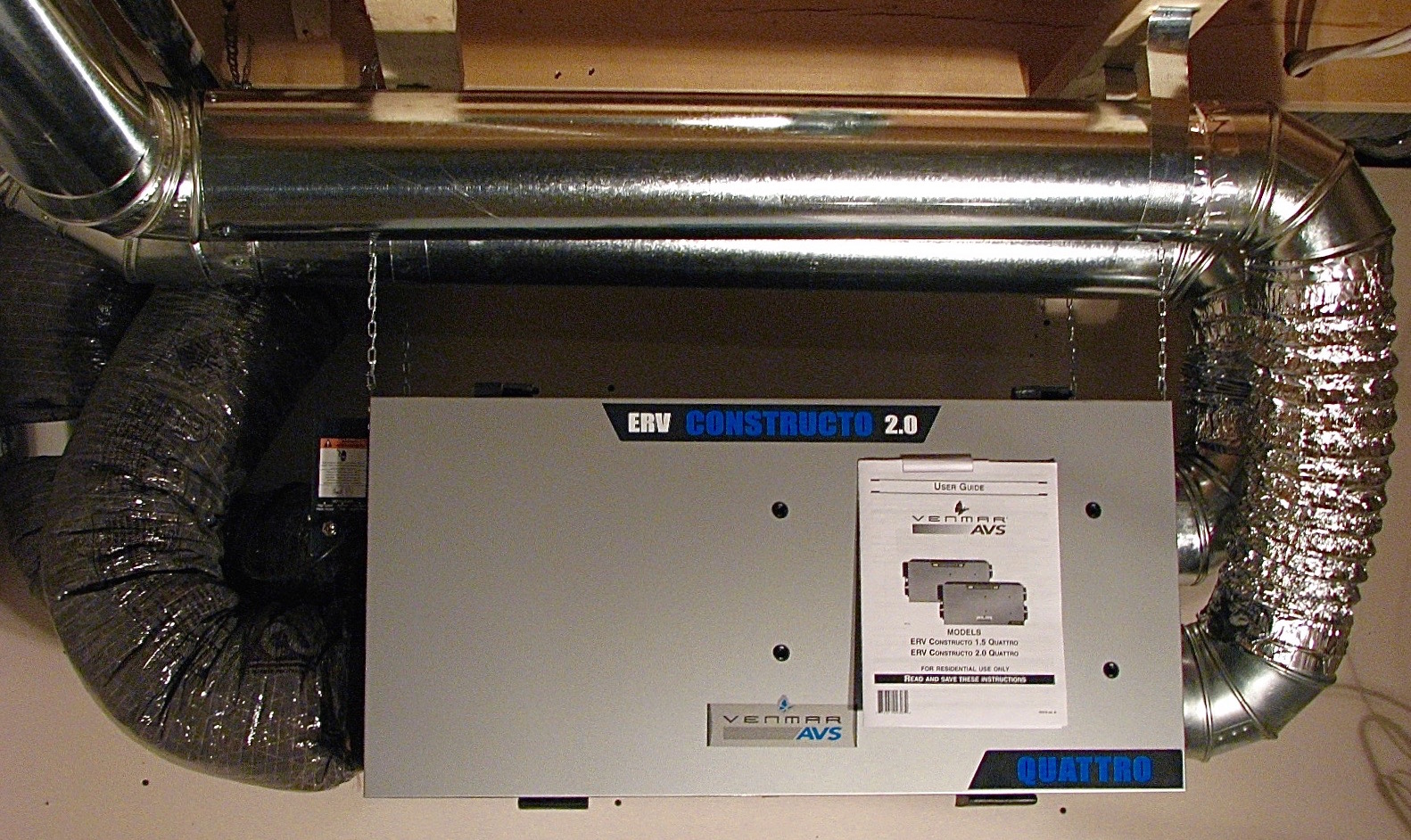How HRV Reduces Risks of Mold and Indoor Damage
Wiki Article
Discovering the Conveniences of Heat Recovery Ventilation for Power Efficiency in Residences
Heat Recovery Ventilation (HRV) systems supply property owners a functional method to boosting energy efficiency. By recovering warmth from outbound air, these systems can significantly reduce heating & cooling prices. Additionally, they provide a stable supply of fresh air, enhancing interior air quality and comfort levels. As property owners take into consideration lasting choices, recognizing the subtleties of HRV systems becomes significantly vital. What variables should one examine prior to making such a financial investment?Recognizing Heat Recovery Ventilation Solutions

How HRV Enhances Indoor Air Top Quality

Power Cost Savings: The Economic Benefits of HRV
Maximizing energy performance, heat recovery ventilation (HRV) systems offer substantial financial benefits for home owners. By recovering and reusing heat from exhaust air, HRVs noticeably lower cooling and heating expenses. This technology can result in energy savings of approximately 30%, depending upon environment and usage patterns. Property owners usually observe reduced utility expenses soon after installation, making HRVs a financially wise financial investment with time. In addition, several regions offer incentives or discounts for energy-efficient upgrades, better improving the financial charm. As energy costs remain to increase, the cost-effectiveness of HRVs ends up being increasingly clear. On the whole, the consolidation of HRV systems not just advertises power performance yet likewise adds to long-lasting financial cost savings for households.The Environmental Effect of Heat Recovery Ventilation
A significant ecological advantage of heat recovery ventilation (HRV) systems exists in their capacity to decrease total power intake. By reclaiming heat from exhaust air and transferring it to inbound fresh air, HRV systems lessen the need for energy-intensive home heating and cooling down approaches. This reduction in power need adds to decrease greenhouse gas discharges, as less nonrenewable fuel source is required to maintain comfortable interior temperatures. Additionally, HRV systems enhance indoor air top quality HRV Heat Recovery Ventilation by successfully trading stagnant air with fresh outdoor air, reducing reliance on mechanical air conditioning systems that can harm the environment. On the whole, the application of HRV systems supports lasting living methods and straightens with global initiatives to battle climate change by promoting energy efficiency in household setups.
Picking the Right HRV System for Your Home
How can home owners ensure they pick the ideal heat recovery ventilation (HRV) system for their requirements? Initially, they must assess their home's size and design, as these aspects influence air movement needs. Next, assessing the system's efficiency ratings is essential, as higher scores suggest much better efficiency and power financial savings. Home owners ought to additionally consider setup and upkeep prices, contrasting different brand names and designs for value. In addition, it is necessary to examine sound levels, as some systems run more quietly than others. Consulting with a/c professionals can give tailored recommendations based on certain home conditions. Checking out customer testimonials and guarantees can assist in making an educated choice, ensuring that the picked HRV system successfully boosts indoor air top quality and energy effectiveness.Often Asked Concerns

Just how Typically Should I Clean or Preserve My HRV System?
The frequency of cleaning or keeping a heat recovery ventilation (HRV) system commonly depends upon use and ecological factors. Generally, it is recommended to perform maintenance every 6 months to guarantee peak performance and air quality.
Can HRV Systems Aid Decrease Humidity Degrees Inside?
HRV systems can effectively reduce indoor moisture levels by trading stale, humid air with fresh, drier air from outdoors. HRV Heat Recovery Ventilation. This process aids keep a balanced indoor environment, improving convenience and protecting against moisture-related problems
What Is the Lifespan of a Typical HRV System?
The life expectancy of a common heat recovery ventilation (HRV) system varies, typically lasting in between 10 to 15 years. Routine upkeep can prolong its effectiveness and functional life, guaranteeing peak efficiency throughout its use duration.Exist Any Kind Of Noise Worries With HRV Solutions?
Noise worry about HRV systems can occur, particularly from follower procedure. Lots of modern-day units are developed to minimize sound degrees, guaranteeing they operate quietly while preserving efficiency, which attends to potential disruptions in living environments.Can I Mount an HRV System Myself, or Do I Required an Expert?
The private contemplated whether to install the heat recovery ventilation (HRV) system directly or work with a professional. Usually, while DIY setup is possible, expertise warranties correct functionality and conformity with local building ordinance, improving system performance.Report this wiki page